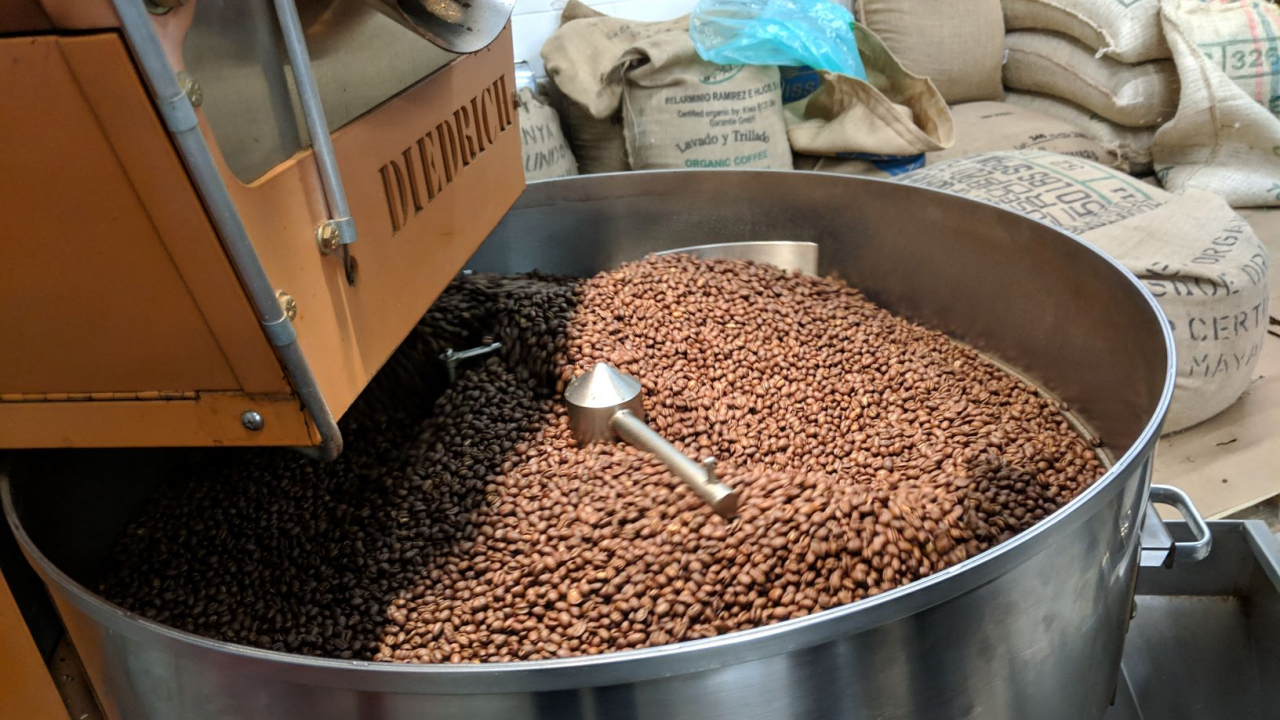
Fayetteville, N.Y. (NCC News)— Two thousand pounds of green coffee beans in large burlap bags are delivered to John Dobbs, founder and coffee roaster at Freedom of Espresso, every week. They come from farms in countries like Columbia, Papa New Guinea, Ethiopia and Kenya, which have suitable climates for coffee growth. Major shippers in New York City receive the beans from the farms and sell to regional coffee roasters like Dobbs.
Graham Reynolds, head roaster at Recess Coffee in Syracuse, goes through the same process. Both are in charge of maintaining their respective companies reputations for high quality coffee. Recess roasts in 20-pound batches, Freedom of Espresso pours closer to 30 pounds of coffee in each roast. A major industrial roasting plant will do batches close around 400 pounds, according to Reynolds.
Green coffee beans can be roasted between 420 and 450 degrees Fahrenheit from 12 to 15 minutes. A dark roasted coffee bean is roasted at higher temperatures for a longer period of time, while a light roast falls on the other end of the spectrum.
Each roast, usually over 20 per day, is brewed and taste tested by Reynolds for quality. That’s the kind of care taken by local coffee roasters — meticulous origin selection, small-batch roasting and quality control. It’s why both roasters say they’re confident their product is better than large coffee retailers like Starbucks and Dunkin.

“What’s holding them back is they’re buying coffee of a lower profile and roasting to a profile to mask defects,” Reynolds said.
Dobbs targeted Starbucks specifically.
“Starbucks has traditionally, and this has been fully recognized, they burn their beans.” Dobbs said,”everyone is pretty much in full agreement. These are burnt beans. It’s bitter tasting coffee.”
Starbucks acknowledges their tendency to roast beans darker on its official website.
“Most coffee is lightly roasted as a way to cut costs,” the website says, “We roast our coffee a little longer, to bring out more of the flavor.”
The reasoning is in direct contradiction with both Dobbs and Reynolds, who both say roasting beans too dark takes away from the coffee’s flavor.
“We can offer freshness, we can offer properly roasted coffee which brings out the flavor,” Dobbs said.




